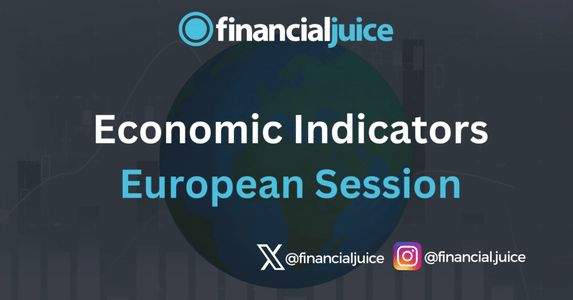
Week Ahead: Economic Indicators (EU)
Hey, Traders!
For the August 5th week, here is a list of all of the major economic indicators being released during the EU Session, with a brief synopsis of what they represent and what to possibly expect from the markets in reaction.
Monday 5th August
03:55 – 04:30 ET
Euro-Area PMI
Composite
The Composite Purchasing Managers’ Index (PMI) provides an estimate of private sector output for the preceding month by combining information obtained from surveys of around 1,000 manufacturing and service sector companies. Results are synthesised into a single index which can range between zero and 100.
Services
The report is based on surveys of over 300 business executives in private sector services companies.
Data is usually released on the third working day of each month.Each response is weighted according to the size of the company and its contribution to total manufacturing or services output accounted for by the sub-sector to which that company belongs.
Replies from larger companies have a greater impact on the final index numbers than those from small companies. Results are presented by question asked, showing the percentage of respondents reporting an improvement, deterioration or no change since the previous month.From these percentages, an index is derived: a level of 50.0 signals no change since the previous month, above 50.0 signals an increase (or improvement), below 50.0 a decrease (or contraction).
What to expect:
A reading above (below) 50 signals rising (falling) output versus the previous month and the closer to 100 (zero) the faster is output growing (contracting). The report also contains the final estimate of the services PMI. The data are provided by Markit.
Tuesday 6th August
02:00 ET
German Industrial Orders
Manufacturers’ orders are a leading indicator for industrial production.
The figures are calculated every month by the Federal Statistical Office and represent the value of all orders for the delivery of self-made products confirmed by industrial enterprises with 50 or more employees in the respective reporting period.
The results are broken down by both sector and region of origin (domestic and foreign split into euro area and non-euro area). Monthly volatility can be very high, so moving averages give a much better guide to underlying trends.
What to expect:
The manufacturers’ orders data rank among the most important early indicators for monitoring and analyzing German economic wellbeing. Because these data are available for both foreign and domestic orders they are a good indication of the relative strength of the domestic and export economies. The results are compiled each month in the form of value indexes to measure the nominal development of demand and in the form of volume indexes to illustrate the price-adjusted development of demand. Unlike in the U.S., orders data are not collected for all manufacturing classifications – but only those parts in which the make-to-order production plays a prominent role. Not included are, for example, mining, quarrying and the food industry.
A higher than expected reading should be taken as positive/bullish for the EUR, while a lower than expected reading should be taken as negative/bearish for the EUR.
Wednesday 7th August
02:45 ET
German Industrial Prodcution
Industrial production measures the physical output of the nation’s factories, mines and utilities. Data are collected from companies in the sector with fifty or more employees and include mining and quarrying, manufacturing, energy and, in contrast to its Eurozone counterpart, construction.
Investors want to keep their finger on the pulse of the economy because it usually dictates how various types of investments will perform. The stock market likes to see healthy economic growth because that translates to higher corporate profits. The bond market prefers more subdued growth that will not lead to inflationary pressures. By tracking economic data such as industrial production, investors will know what the economic backdrop is for these markets and their portfolios.
Like the manufacturing orders data, the production index has the advantage of being available in a timely manner giving a more current view of business activity. Those responding to the data collection survey account for about 80 percent of total industrial production. Like the PPI and the orders data, construction is excluded.
What to expect:
This report has a big influence on market behavior. In any given month, one can see whether capital goods or consumer goods are growing more rapidly. Are manufacturers still producing construction supplies and other materials? This detailed report shows which sectors of the economy are growing and which are not.
Friday 9th August
02:00 ET
German HICP
The Harmonized Index of Consumer Prices is an index of consumer prices calculated and published by Destatis, on the basis of a statistical methodology that has been harmonized across all EU member states. HICP is a measure of prices used by the Governing Council of the EU to define and assess price stability in the euro area as a whole in quantitative terms.
What to expect:
As the rate of inflation changes and as expectations on inflation change, the markets adjust interest rates. The effect ripples across stocks, bonds, commodities, and your portfolio, often in a dramatic fashion.
By tracking inflation, whether high or low, rising or falling, investors can anticipate how different types of investments will perform. Over the long run, the bond market will rally (fall) when increases in the CPI are small (large). The equity market rallies with the bond market because low inflation promises low interest rates and is good for profits.



